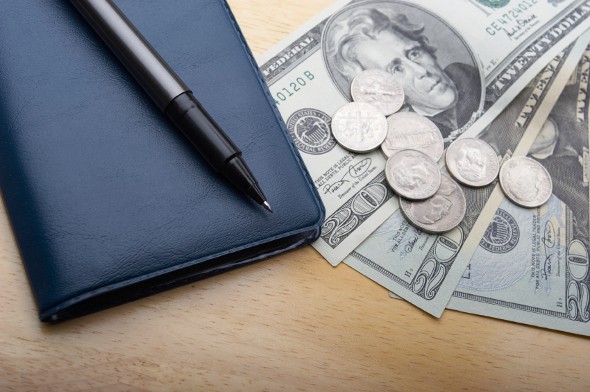Millennials probably can’t imagine banking without their computers or cell phones. Members of older generations, however, might recall a time when they had to visit a branch to access their accounts. To some people, the passbook savings account is a thing of the past. To others, there’s still room for it, even in our high-tech society.
A financial advisor can help you navigate savings interest rates for a number of retirement accounts. for your future retirement.
How a Passbook Savings Account Work
Passbook savings accounts have been around for more than 100 years. Each person who had this kind of account received a small booklet, called a passbook. With a passbook, a consumer could easily keep track of the status of their bank account.
If someone with a passbook savings account needed to make a deposit or take money out of their account, they had to physically enter a bank to complete the transaction. And each time, their passbook received a stamp as proof of what had taken place. The teller also wrote down the current account balance amount. The bank had information about each of its customers stored in its files and the passbook made it possible for consumers to manage their own savings.
How Passbook Savings Accounts Have Changed
Although they’ve managed to withstand the test of time, current passbook savings accounts aren’t exact replicas of the ones previous generations used. Instead of making handwritten notes about deposits and withdrawals and leaving stamps inside of the passbooks, bankers type this information into their computers. Then, they use a special printer that copies that information directly into a customer’s passbook.
Advantages of a Passbook Savings Account

One of the most notable benefits of having a passbook savings account is its simplicity. If you were to stop and compare different savings and checking accounts, you would find that many of them come with pages of terms, rules and conditions. Plus, they often have a variety of fees that consumers sometimes don’t understand until they’re hit with charges.
Passbook savings account holders avoid all of that. These accounts usually don’t come with sneaky bank fees. If there is a minimum balance requirement for customers, (and there often isn’t) it’s typically low.
In fact, for many folks, the passbook savings account was their very first bank account. It can be a great tool that teaches children and young adults how to be responsible with their savings. Overdrawing your account is out of the question since you have to get a banker to sign off on your withdrawals. And because you have to stop by the bank to get access to your savings, impulse spending is easier to avoid.
Drawbacks of Passbook Savings Accounts
Passbook savings accounts seem outdated now that people have the ability to deposit payments electronically. Not all banks send their clientele electronic or paper bank statements, either. With a passbook savings account, you can’t review your account details online or on your phone. And if you lose your passbook, you’ll have no clue where your finances stand.
From a bank’s standpoint, these accounts can be expensive to maintain. Besides paying for the passbooks, the banks also have to pay for the machines that tellers use to transfer electronic data into the passbooks. Online banks don’t have any of these brick-and-mortar costs and can offer rates that are higher than the average savings account interest rates as a result.
Who Benefits From Passbook Savings Accounts Today?
Passbook savings accounts can still be useful for children and young adults who are learning how to manage money. These accounts offer a simple, hands-on way to see how saving works. By bringing their passbook to the bank and watching their balance grow over time, young savers can better understand the value of setting money aside to avoid unnecessary spending.
Older adults who prefer in-person banking may also benefit from passbook savings accounts. For those who are not comfortable with online or mobile banking, having a physical record of their savings can feel more secure. They can check their balances by visiting a local branch and avoid dealing with apps, passwords, or internet issues. This makes it a popular option for people in retirement.
Passbook savings accounts may also appeal to people who want to separate their savings from daily spending. Since these accounts typically require a trip to the bank to withdraw money, it can reduce the chance of making impulse purchases. This setup might work well for individuals building an emergency fund or saving toward a specific goal who want fewer distractions from easy access to their funds.
Bottom Line

Passbook savings accounts provide a simplified, secure and traditional banking option for adults as well as children. Unlike with other accounts, there are very few barriers to entry and they can be beneficial to individuals who are serious about building their savings or starting an emergency fund. These savings accounts have their flaws, of course. If you enjoy being able to access your bank accounts from your mobile device or you don’t have time to make routine trips to the bank, a passbook savings account might not be worth opening.
Tips for Building Your Savings
- Use a professional to build a plan. A financial advisor can help build a strategy to reach your financial goals. SmartAsset’s free tool matches you with up to three vetted financial advisors who serve your area, and you can interview your advisor matches at no cost to decide which one is right for you.
- Start early and save often. Budgeting can help you set aside money. Investments can compound over time, so even small amounts can go far in the long run. If you need help with keeping yourself on track, set up a reminder on a digital or physical calendar to automatic deposits timed with your paycheck interval.
- Build an emergency fund to build a moat around your investments. Emergency funds can be built with any sort of savings account. Stashing your money in high interest savings account will earn you some low effort interest.
Photo credit: ©iStock.com/Robert Payne, ©iStock.com/Gawrav Sinha, ©iStock.com/Juanmonino
